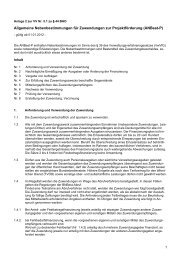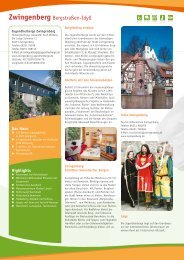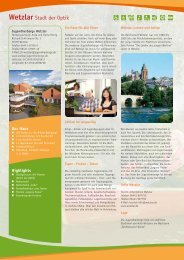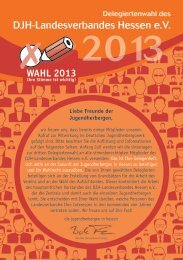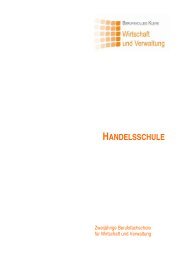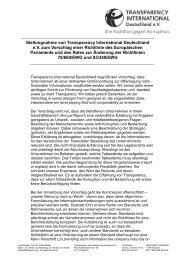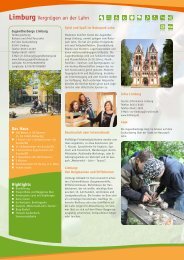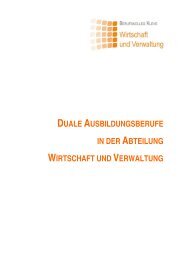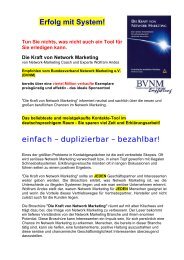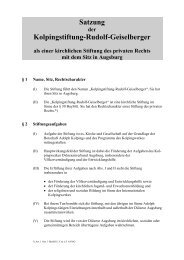REPA Booklet - Stop Epa
REPA Booklet - Stop Epa
REPA Booklet - Stop Epa
Create successful ePaper yourself
Turn your PDF publications into a flip-book with our unique Google optimized e-Paper software.
8<br />
The European Union’s Base Line<br />
What happened after the Green Paper was released in 1996?<br />
The purpose of the Green Paper was to provide a basis for discussions within the European Union on the future<br />
of Lomé. So there were consultations in the European Parliament and each EU Member State. In October 1997,<br />
the Commission published Guidelines for the negotiation of new cooperation agreements with ACP countries,<br />
known as the draft mandate. These stressed openness, transparency and participation in the process – within<br />
parameters set by the European Union.<br />
“The neo-liberal<br />
approach being<br />
proposed is<br />
already in a state<br />
of crisis given<br />
the experience<br />
of SAPS and<br />
recent crisis in<br />
the world<br />
particularly in<br />
emerging<br />
markets.”<br />
(Moses Tekere,<br />
TRADES<br />
CENTRE, Harare,<br />
updated)<br />
What was the thrust of the European Commission’s negotiating mandate?<br />
There were five major Policy Guidelines:<br />
1. Give the partnership a strong new political dimension – this ‘shared’ political vision would be<br />
reinforced by political conditionalities on aid, in line with the EC’s Agenda 2000 development strategy<br />
that required ‘complementarity, coordination and coherence’ across aid, trade and politics. The new<br />
strengthened partnership was expected to foster a ‘policy environment conducive to legitimacy’ and a<br />
sense of ‘ownership’ by ACP governments that have ‘voluntarily’ adopted the Europeans’ development<br />
agenda.<br />
2. Make poverty alleviation the cornerstone of the partnership – this new emphasis on poverty<br />
alleviation was the result of public criticism of the Green Paper and was grafted onto the neoliberal<br />
objectives of economic growth, development of local markets, regional integration and integration into<br />
the global economy - with special attention to the role of ‘civil society’, especially private enterprise.<br />
3. Open up cooperation to economic partnership – the Commission aimed to ‘breathe new life’ into<br />
a genuine partnership that would reflect the mutual interests of both parties by negotiating regional and<br />
sub-regional economic cooperation and partnership agreements. These agreements would<br />
accommodate different levels of development, but eventually achieve reciprocity in a way that was<br />
compatible with the European Union’s Common Agricultural Policy and the rules of the WTO.<br />
4. Overhaul procedures for financial and technical cooperation – Lomé had provided certainty<br />
and stability based on contracts, but proved to be inefficient in achieving the European Union’s goals<br />
and ACP ownership of reforms. Each ACP government would now be made responsible for its<br />
development through a system of rewards for those who comply, but not for those who depart from<br />
‘good governance’.<br />
5. Treat the ACP as a group while introducing geographical diversification – essentially the<br />
Commission would conduct dialogue through the ACP Group, but negotiate at the level of regional and<br />
subregional trade groupings. The European Union’s own solidarity would remain intact, operating<br />
through the Commission.<br />
How would the Commission’s Policy Guidelines be translated into more concrete policies?<br />
The mandate identified three ‘main priorities’:<br />
- support for growth and policies for competitiveness and employment;<br />
- support for social policies and cultural cooperation; and<br />
- regional integration;<br />
plus three ‘essential criteria’ or ‘cross-cutting’ issues - capacity building, gender sensitivity and environmental<br />
principles – that would run through each level.<br />
What was the Commission’s negotiating mandate on the trade aspect of the post-Lomé relationship?<br />
As expected, this centred on ‘differentiated reciprocity’, on the grounds that ‘a dynamic approach’ of reciprocity,<br />
rather than unilateral preferences, would help both sides benefit from a ‘genuine partnership’. In return for<br />
gaining access for their products into ACP markets, the Commission would help ACP countries to become more<br />
trade and investment friendly and to increase European investment to tap their ‘comparative advantage’ (mainly<br />
in raw materials). The Commission would also ‘invite’ the ACP to support it within the WTO. The Commission<br />
recognised there would be barriers to achieving this: the different extent and enthusiasm for trade liberalisation<br />
among ACP countries; their low capacity to handle the additional ‘trade-related’ issues the Commission was<br />
A People’s Guide To The Pacific’s Economic Partnership Agreement 21



